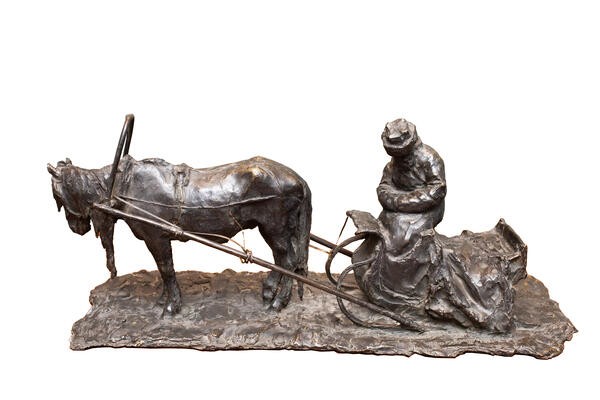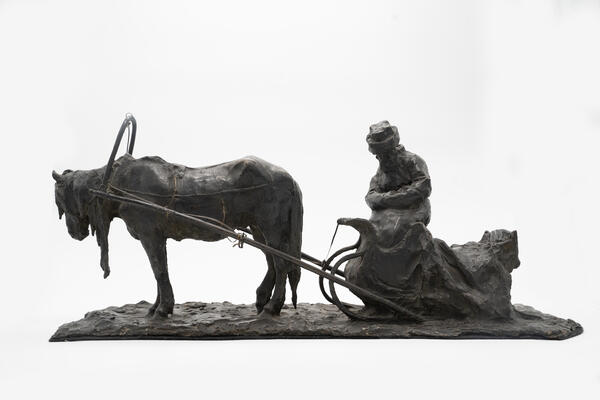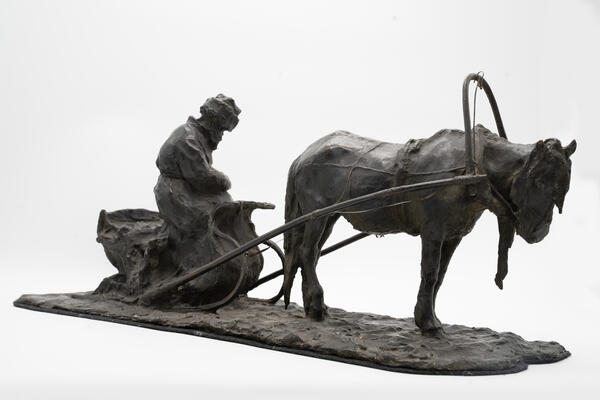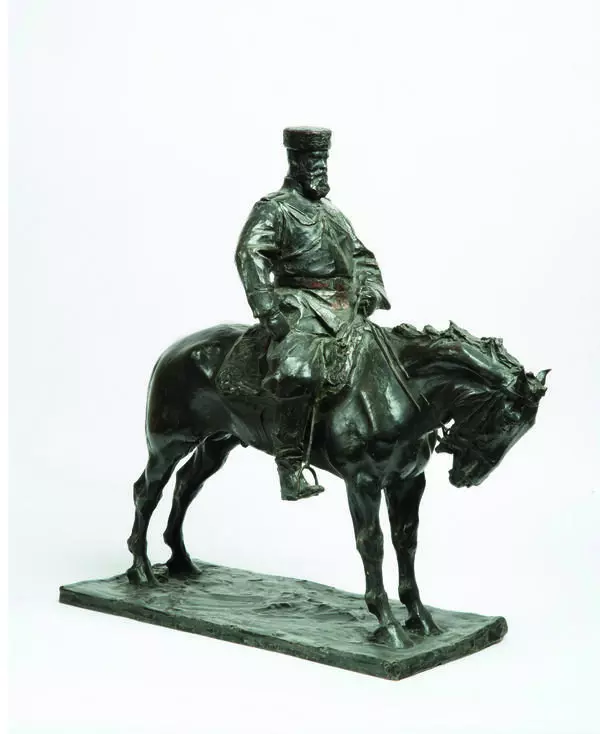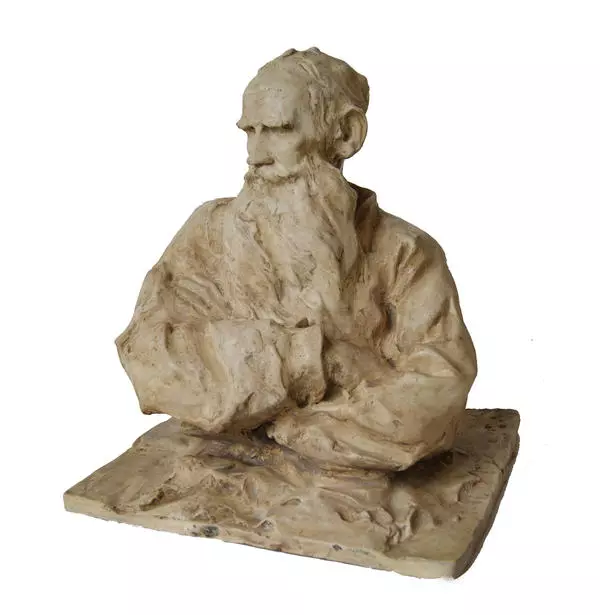The sculptural composition “Moscow Coach Driver” displayed at the Feodor Chaliapin Estate Museum was created by a friend of the singer, sculptor Paolo Troubetskoy.
Pavel Petrovich Troubetskoy was born in Italy, in a place called Intra near Lake Maggiore, so he is also known as Paolo. The father of the future artist was Prince Pyotr Troubetskoy, who came to Italy in 1863 on a diplomatic mission and remained there until the end of his life. Married to the American pianist Ada Winans, the prince had three sons: Pierre, Paolo, and Luigi. Paolo studied in Milan and at the age of eight made his first sculpture — the head of a singing old man in wax. This work was highly appreciated by the outstanding Italian sculptor Giuseppe Grandi. Later Paolo created another sculpture that drew Grandi’s attention — marble statue called “Resting Deer”.
At the age of 19, Troubetskoy bought his own studio in Milan, and a year later first participated in an exhibition where his sculptural work “Horse” was highly appreciated. The famous Italian writer Gabriele d’Annunzio, who later became his friend, wrote a large glowing article about Troubetzky’s sculptures.
In 1897, Paolo Troubetskoy came to St. Petersburg and accepted an offer from Prince Lvov, director of the Moscow School of Painting, Sculpture and Architecture, to teach sculpture. His work as a teacher had a great influence on the development of a number of Russian masters. Young sculptors — Alexander Terentyevich Matveyev, Nikolay Andreyevich Andreyev and others — attended his classes with great joy.
1897 was the beginning of a vibrant period of the artist’s life. He met Isaac Levitan and Feodor Chaliapin; he was invited to visit well-known Russian families: Paolo stayed at Princess Maria Klavdievna Tenisheva’s, at the Sheremetevs’, at Tolstoy’s in Yasnaya Polyana. “A very interesting man, thoughtful and intelligent,” Leo Tolstoy said of Troubetskoy. Leo Tolstoy was willing to sit for the sculptor several times. During those years, Paolo Troubetskoy became one of the founders of the “World of Art” association. He took part in many exhibitions of its members in St. Petersburg, for instance, he presented sculptural portraits of the painter Isaac Levitan.
Pavel Petrovich Troubetskoy was born in Italy, in a place called Intra near Lake Maggiore, so he is also known as Paolo. The father of the future artist was Prince Pyotr Troubetskoy, who came to Italy in 1863 on a diplomatic mission and remained there until the end of his life. Married to the American pianist Ada Winans, the prince had three sons: Pierre, Paolo, and Luigi. Paolo studied in Milan and at the age of eight made his first sculpture — the head of a singing old man in wax. This work was highly appreciated by the outstanding Italian sculptor Giuseppe Grandi. Later Paolo created another sculpture that drew Grandi’s attention — marble statue called “Resting Deer”.
At the age of 19, Troubetskoy bought his own studio in Milan, and a year later first participated in an exhibition where his sculptural work “Horse” was highly appreciated. The famous Italian writer Gabriele d’Annunzio, who later became his friend, wrote a large glowing article about Troubetzky’s sculptures.
In 1897, Paolo Troubetskoy came to St. Petersburg and accepted an offer from Prince Lvov, director of the Moscow School of Painting, Sculpture and Architecture, to teach sculpture. His work as a teacher had a great influence on the development of a number of Russian masters. Young sculptors — Alexander Terentyevich Matveyev, Nikolay Andreyevich Andreyev and others — attended his classes with great joy.
1897 was the beginning of a vibrant period of the artist’s life. He met Isaac Levitan and Feodor Chaliapin; he was invited to visit well-known Russian families: Paolo stayed at Princess Maria Klavdievna Tenisheva’s, at the Sheremetevs’, at Tolstoy’s in Yasnaya Polyana. “A very interesting man, thoughtful and intelligent,” Leo Tolstoy said of Troubetskoy. Leo Tolstoy was willing to sit for the sculptor several times. During those years, Paolo Troubetskoy became one of the founders of the “World of Art” association. He took part in many exhibitions of its members in St. Petersburg, for instance, he presented sculptural portraits of the painter Isaac Levitan.

